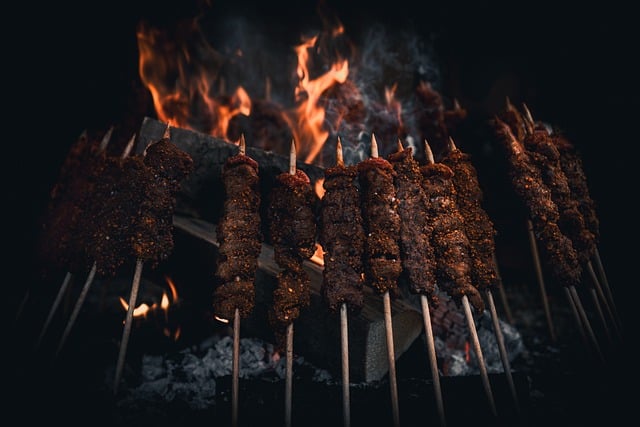Savoring the Sizzle: The Art of Malaysian Satay
Malaysia's vibrant street food scene comes alive with the tantalizing aroma of satay. This beloved dish, featuring succulent skewered meats grilled to perfection, has captured hearts worldwide. Join us as we explore the rich history, diverse flavors, and modern twists of Malaysian satay, uncovering the secrets behind its irresistible appeal and cultural significance.

The Perfect Marinade: A Symphony of Flavors
At the heart of every great satay lies its marinade, a carefully balanced blend of aromatic spices and herbs. Traditional Malaysian satay marinades typically include lemongrass, turmeric, coriander, and cumin, creating a complex flavor profile that tantalizes the taste buds. The addition of palm sugar and coconut milk lends a subtle sweetness and richness to the meat. Chefs and home cooks alike take pride in their unique marinade recipes, often passed down through generations. The key to a successful marinade lies in allowing enough time for the flavors to penetrate the meat, typically ranging from four to 24 hours. This process not only enhances the taste but also helps tenderize the meat, ensuring a juicy and flavorful end result.
Grilling Techniques: Mastering the Flame
The art of grilling satay is a skill honed through years of practice. Traditional satay masters use charcoal grills, which impart a distinctive smoky flavor to the meat. The skewers, often made from bamboo, are carefully arranged over the hot coals, requiring constant attention and frequent turning to achieve the perfect char without burning. The ideal satay should have a slightly crispy exterior while remaining tender and juicy on the inside. Modern variations include using gas grills or even indoor grilling pans, but purists argue that the authentic flavor can only be achieved through traditional charcoal grilling. The grilling process is not just about cooking; it’s a performance, with skilled satay vendors showcasing their expertise through deft movements and precise timing.
Beyond Chicken: Exploring Satay Variations
While chicken satay remains the most popular variety, Malaysian cuisine offers a wide range of satay options to suit every palate. Beef satay, known for its rich flavor and tender texture, is a favorite among meat lovers. For those seeking a leaner option, fish satay made with firm white fish like snapper or grouper provides a delicate yet satisfying alternative. Vegetarians and vegans aren’t left out either, with tofu and tempeh satay gaining popularity in recent years. These plant-based options are marinated and grilled just like their meat counterparts, offering a similar texture and flavor profile. Some innovative chefs have even experimented with fruit satay, using pineapple or mango to create a sweet and savory appetizer or dessert.
The Perfect Accompaniment: Peanut Sauce and Beyond
No discussion of Malaysian satay would be complete without mentioning its quintessential accompaniment: peanut sauce. This rich, creamy sauce combines ground peanuts with a blend of spices, tamarind, and palm sugar, creating a perfect balance of sweet, sour, and spicy flavors. The sauce is not just a condiment but an integral part of the satay experience, often served warm alongside the grilled skewers. While peanut sauce remains the classic choice, regional variations offer alternatives such as spicy chili sauce or sweet soy sauce. To round out the meal, satay is typically served with ketupat (rice cakes), cucumber slices, and raw onions, providing a refreshing contrast to the rich, grilled meat.
Useful Tips & Facts
• Always soak bamboo skewers in water for at least 30 minutes before grilling to prevent burning.
• For the juiciest satay, avoid overcooking. Remove from heat when the meat is just cooked through.
• Experiment with different meats and marinades to find your perfect combination.
• Peanut sauce can be made ahead of time and reheated, allowing flavors to develop further.
• Malaysian satay is typically smaller and more well-done compared to its Indonesian counterpart.
• The word “satay” is believed to have originated from the Tamil word “cattai,” meaning flesh.
• National Satay Day is celebrated in Malaysia on the last Saturday of August.
As we’ve seen, Malaysian satay is more than just a dish; it’s a celebration of flavor, tradition, and cultural heritage. From its humble street food origins to its current status as a beloved national treasure, satay continues to evolve while staying true to its roots. Whether you’re grilling your own satay at home or savoring it from a street vendor in Kuala Lumpur, each bite offers a taste of Malaysia’s rich culinary tapestry. So the next time you encounter this delicious skewered delight, take a moment to appreciate the artistry and history behind each perfectly grilled morsel.





